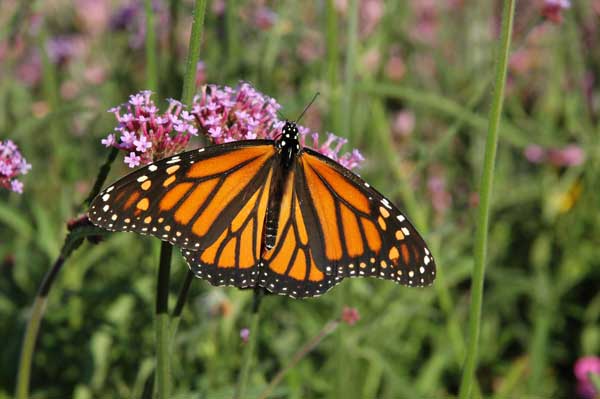Eastern Butterflies Reveal Their Midwestern Roots


There's an old adage that almost nobody who lives in New York is actually from New York. Now the same can be said about the East Coast and monarch butterflies. Researchers from Canada's University of Guelph discovered that almost 90 percent of the monarchs they sampled along the United States' eastern seaboard were born in the Midwest.
The new research helps answer a question that has baffled biologists: Why do monarch butterflies typically show up in the Great Lakes region a full month before they're spotted east of the Appalachian Mountains?
Each spring, millions of monarchs migrate from wintering grounds in Mexico to sites across the United States. Conventional wisdom held that the butterflies made a stop in the Gulf states, then spread out to the rest of the country.
"The mystery was, if they did that, why are the East Coast butterflies always later than their Midwestern counterparts despite the fact that their food, milkweed, is available in both places at the same time?" said Ryan Norris, a University of Guelph professor of integrative biology who worked on the new migration study.
It turns out that some butterflies can fly over mountains.
"This means that the recolonization of the East Coast is by second-generation monarchs that hatched around the Great Lakes and then migrated eastward over the Appalachians," said Nathan Miller, a Guelph graduate student who was lead author of the study.
Monarchs are finicky eaters, which worked to the researchers' advantage. The species eats only milkweed, and that plant has a unique chemical signature depending on where it grows, which shows up in butterfly tissue after the insects feed. By examining hydrogen and carbon isotopes in the butterflies' wings, the researchers could pinpoint where an individual was born.
Get the world’s most fascinating discoveries delivered straight to your inbox.
"It provides a natal, geospatial fingerprint that is fixed for the duration of the butterfly's lifespan," Miller said.
Norris said the new research shows that initiating a conservation effort west of the Appalachians could have a far-reaching effect. "We must target the Great Lakes region to conserve the East Coast monarch populations," he said.
The study was detailed July 14 in an advance online version of the scientific journal Biology Letters.
- Image Gallery: Colorful Butterflies
- Migrating Monarch Butterflies Have Longer Wings
- Top Ten Most Incredible Animal Journeys
This article was provided by OurAmazingPlanet, a sister site to LiveScience.



